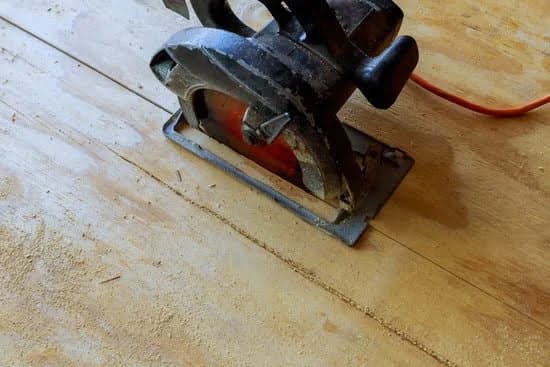Are you wondering how to remove paint from woodwork? Properly removing paint from woodwork is important for maintaining the beauty and integrity of the wood. Whether you are looking to refinish your woodwork or simply want to reveal its natural beauty, it is essential to understand the different types of paint and finishes on woodwork, as well as the various methods for safely stripping paint.
Woodwork can be found in many homes, adding character and charm to any space. However, over time, layers of paint can build up, obscuring the original beauty of the wood. It is crucial to know how to effectively remove this paint without damaging the wood underneath.
In this article, we will explore the importance of properly removing paint from woodwork. We will also discuss the different types of paint and finishes that may be present on woodwork, as well as provide a comprehensive guide on how to safely remove paint using chemical strippers, sanding techniques, and heat gun methods. Additionally, we will cover tips for refinishing and protecting the newly stripped woodwork for long-lasting beauty.
Understanding the Different Types of Paint and Finishes on Woodwork
Woodwork is often painted with different types of paint and finishes, each requiring specific methods for removal. Understanding the different types of paint and finishes on woodwork is crucial in ensuring the proper approach to removing them without causing damage to the wood surface. Common types of paint used on woodwork include latex, oil-based, and acrylic paints, each with its own set of properties that determine the best removal method.
Latex paint, also known as water-based paint, is one of the most common types used on woodwork. It dries quickly and can be easily cleaned with soap and water. Oil-based paint, on the other hand, dries more slowly and forms a strong, durable coating on the wood surface.
Acrylic paint is a versatile option that provides a glossy finish and good adhesion to wood surfaces. These different types of paint require specific removal methods to effectively strip them from woodwork without causing damage.
In addition to the type of paint, it’s important to consider the finish applied to the woodwork. Common finishes include matte, satin, semi-gloss, and gloss. Each finish affects the appearance and durability of the painted woodwork.
For example, glossy finishes are more resistant to moisture and easier to clean, while matte finishes provide a more subtle appearance but may require more care during removal. Understanding both the type of paint and finish on woodwork is essential in determining how to remove paint from woodwork effectively while preserving its natural beauty.
| Type of Paint | Best Removal Method |
|---|---|
| Latex (Water-Based) | Chemical Paint Strippers or Sanding |
| Oil-Based | Chemical Paint Strippers or Heat Gun Method |
| Acrylic | Sanding or Heat Gun Method |
Preparing the Work Area and Gathering the Necessary Tools and Materials
When it comes to removing paint from woodwork, proper preparation and having the right tools and materials are essential for a successful project. Before starting any paint removal job, it is important to ensure that the work area is properly prepared to minimize mess and ensure safety.
Covering and Protecting Surrounding Surfaces
To prevent damage to surrounding surfaces, such as walls and flooring, it is important to cover them with protective materials. Use drop cloths or plastic sheeting to cover the floor and any nearby furniture. Additionally, consider using masking tape to protect adjacent surfaces that you do not want to strip or refinish.
Gathering Necessary Tools and Materials
Before starting the paint removal process, gather all the necessary tools and materials. This includes paint stripping chemicals (if you choose this method), sandpaper of varying grits, a heat gun (if using the heat gun method), scrapers, gloves, safety goggles, respirator mask, and disposable containers for holding removed paint residue. Depending on the size of the project, you may also need a ladder or step stool for reaching higher areas.
Ensuring Proper Ventilation
When working with chemical paint strippers or using a heat gun, it is crucial to have adequate ventilation in the work area. Open windows and use fans to help dissipate fumes and maintain good air circulation. If working in an enclosed space, consider using a respirator mask to protect against inhaling harmful vapors.
Properly preparing the work area ensures that the paint removal process goes smoothly and safely. By taking these steps before beginning your project, you can set yourself up for success in effectively removing paint from woodwork while maintaining a clean and safe work environment.
How to Safely Strip Paint From Woodwork Using Chemical Paint Strippers
Stripping paint from woodwork can be a daunting task, but it is an important step in preserving the beauty and integrity of wooden surfaces. Chemical paint strippers are a popular choice for effectively removing layers of paint from woodwork. However, it is crucial to use these products safely and correctly to avoid any potential hazards. In this section, we will discuss how to safely strip paint from woodwork using chemical paint strippers.
Choosing the Right Chemical Paint Stripper
Before starting the paint removal process, it is essential to select the right chemical paint stripper for the job. There are various types of paint strippers available on the market, including solvent-based, caustic-based, and biochemical strippers. It is important to consider the type of paint and finish on the woodwork when choosing a paint stripper.
Preparing the Work Area
Once you have selected a suitable chemical paint stripper, it is crucial to prepare the work area before application. This includes ensuring proper ventilation in the workspace and protecting surrounding areas from potential damage. Additionally, it is essential to wear protective gear such as gloves, goggles, and a mask to prevent exposure to fumes and chemicals during the paint removal process.
Application and Removal Process
When applying the chemical paint stripper to the woodwork, it is important to follow the manufacturer’s instructions carefully. This may involve brushing or spraying on the product and allowing it to sit for a specified amount of time. After the stipulated time has passed, use a scraper or steel wool to gently remove softened layers of paint from the woodwork. Be sure to dispose of any used material properly according to local regulations.
By following these steps and taking necessary precautions, you can safely strip paint from woodwork using chemical paint strippers without causing damage or harm. Remember that proper preparation and application are key factors in achieving successful results while minimizing risks associated with using these products.
Alternatives to Chemical Paint Strippers
When it comes to removing paint from woodwork, using chemical paint strippers may not always be the best option, especially if you are working indoors or want to avoid potentially harmful fumes. In these cases, there are alternative methods that can be just as effective: sanding and heat gun methods. Both of these techniques have their own advantages and can produce great results when done properly.
Sanding is a popular and effective method for removing paint from woodwork. It involves using sandpaper or a power sander to physically remove layers of paint from the wood surface. This method is ideal for flat or slightly curved surfaces, and it gives you more control over the process compared to chemical paint strippers.
On the other hand, using a heat gun is another alternative for removing paint from woodwork. This method involves using a tool that emits hot air to soften and loosen the paint so it can be easily scraped off.
The heat gun method is great for intricate details and hard-to-reach areas on woodwork, as well as for removing multiple layers of paint. However, it’s important to use caution when using a heat gun to avoid damaging the wood or causing a fire hazard.
For those wondering how to remove paint from woodwork without resorting to chemical strippers, both sanding and heat gun methods offer effective solutions. Whichever method you choose will depend on the type of woodwork you are working with and your own comfort level with each technique. With proper preparation and careful execution, both sanding and heat gun methods can leave your woodwork looking beautiful and ready for refinishing.
Steps for Effectively Removing Paint From Intricate Woodwork Details and Crevices
When it comes to removing paint from intricate woodwork details and crevices, it’s important to approach the task with care and patience to avoid damaging the delicate features of the wood. Here are some steps you can follow to effectively remove paint from these intricate areas:
- Assess the intricacy: Before diving into the paint removal process, take a close look at the intricate details and crevices of the woodwork. This will help you determine the best approach for removing the paint without causing any damage.
- Use a small brush or toothbrush: For smaller, hard-to-reach areas, consider using a small brush or even a toothbrush to apply the paint stripper. This will allow you to target specific areas without affecting the surrounding woodwork.
- Take your time: When dealing with intricate details, it’s important to work slowly and carefully. Rushing through the process can result in mistakes or damage to the woodwork, so be patient and methodical as you remove the paint.
Additionally, if you’re using a heat gun or sanding method for paint removal on intricate woodwork, be sure to exercise caution and take your time to avoid overheating or gouging the delicate features of the wood. Properly removing paint from intricate woodwork details and crevices is essential for achieving a professional-looking finish when refinishing the wood.
By following these steps and taking your time, you can successfully remove paint from even the most intricate of woodwork designs while preserving their beauty and integrity.
Cleaning and Preparing the Newly Stripped Woodwork for Refinishing
After successfully removing the paint from woodwork using your preferred method, the next crucial step is to clean and prepare the wood for refinishing. This process is essential for achieving a smooth and professional-looking result.
First, start by removing any residue left behind from the paint stripping process. Use a clean cloth or sponge with mineral spirits to thoroughly wipe down the woodwork. This will help to eliminate any remaining paint stripper, as well as dirt and grime that may have accumulated on the surface.
Once the woodwork is clean, inspect it for any imperfections or rough spots. Lightly sand the surface with fine-grit sandpaper to smoothen out any uneven areas or rough patches. This will ensure that the wood is ready for refinishing and will result in a seamless final appearance.
Finally, consider applying a wood conditioner to ensure that the newly stripped woodwork absorbs stain and finishes evenly. Wood conditioner helps to prevent blotchiness and promotes a more uniform finish. Apply it according to the manufacturer’s instructions, then proceed with staining or painting your newly stripped woodwork.
| Step | Description |
|---|---|
| 1 | Remove residue with mineral spirits |
| 2 | Lightly sand the surface |
| 3 | Apply wood conditioner before refinishing |
Tips for Refinishing and Protecting the Woodwork After Paint Removal
Refinishing and protecting woodwork after paint removal is a crucial step to ensure the longevity and beauty of the wood. Once the paint has been successfully removed from the woodwork, it’s essential to refinish and protect the surface to enhance its appearance and safeguard it from damage.
The first step in refinishing is to sand the woodwork to create a smooth and even surface. Start with a coarse-grit sandpaper to remove any remaining traces of paint or finish, then gradually move on to finer grits for a polished result. Sanding not only prepares the wood for staining or painting, but it also helps to smooth out any imperfections caused by the paint removal process.
After sanding, it’s time to apply a new finish or protective coating to the woodwork. Depending on your preference, you can either stain the wood for a natural look or apply a fresh coat of paint for a more colorful finish. Finish off with a clear protective sealer or varnish to shield the wood from moisture and wear.
Finally, once the refinishing process is complete, it’s important to maintain and protect the newly stripped and refinished woodwork. Regular cleaning with a gentle cleanser and soft cloth will help preserve its appearance over time. Additionally, consider using furniture wax or polish to provide an extra layer of protection against everyday wear and tear. Following these tips will ensure that your newly stripped and refinished woodwork remains beautiful for years to come.
Conclusion
In conclusion, it is essential to understand the importance of properly removing paint from woodwork in order to maintain its beauty and prolong its lifespan. Whether you are dealing with intricate details or smooth surfaces, taking the time to strip paint carefully can make a significant difference in the end result of your refinishing project.
By understanding the different types of paint and finishes on woodwork, you can choose the best method for removing paint without causing damage to the wood.
While chemical paint strippers are a popular choice for removing paint from woodwork, it is important to use them safely and follow manufacturer’s instructions. However, if you prefer alternatives to chemical strippers, methods such as sanding and heat guns can also effectively remove paint from woodwork. Each method has its own set of benefits and considerations, so it’s important to choose the one that best fits your skill level and project needs.
Once the paint has been successfully removed from the woodwork, it is crucial to clean and prepare the surface for refinishing. This step ensures that any residual paint or debris is removed before applying a new finish.
Additionally, taking the time to properly refinish and protect the woodwork after paint removal will help maintain its beauty for years to come. In closing, understanding how to remove paint from woodwork is an essential skill for anyone looking to restore or refinish their wooden surfaces while preserving their natural beauty.
Frequently Asked Questions
What Is the Easiest Way to Remove Paint From Wood?
The easiest way to remove paint from wood is by using a chemical paint stripper or solvent. These products work by breaking down the paint’s bond to the wood, making it easier to scrape or wipe away.
It’s important to follow the instructions on the product carefully and use protective gear such as gloves and eye protection when working with chemical strippers.
How Do You Get Paint Off Wood Trim?
To get paint off wood trim, you can use a few different methods depending on the type of paint and the condition of the wood. One common approach is to use a heat gun or hairdryer to soften the paint before scraping it off with a putty knife or scraper.
Another option is to use a chemical paint remover specifically designed for trim surfaces. Sanding is also an effective method for removing old paint from wood trim.
How Do You Remove Paint Without Damaging the Finish?
Removing paint without damaging the finish requires careful consideration of the type of finish and the method used for removal. For delicate finishes like lacquer or shellac, it’s best to use gentle methods such as hand sanding with fine-grit sandpaper or using a mild solvent with minimal abrasion.
For more durable finishes like polyurethane, you can use stronger solvents or mechanical methods like scraping or power sanding, but it’s important to test in an inconspicuous area first to ensure the finish isn’t damaged in the process.

Hi everyone! I’m a woodworker and blogger, and this is my woodworking blog. In my blog, I share tips and tricks for woodworkers of all skill levels, as well as project ideas that you can try yourself.





